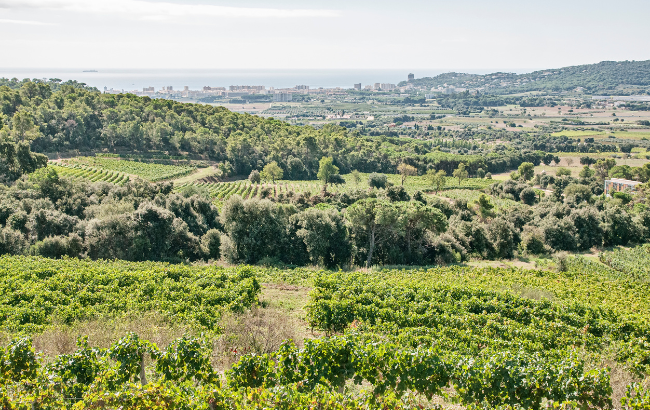Seven reasons to drink Austrian wine
By Patrick SchmittIf you are looking for a country whose wine is top-notch, varied, and also great value for money, Austria fits the bill. Here, Patrick Schmitt MW outlines seven reasons why expressions from this region’s wines are such strong offerings
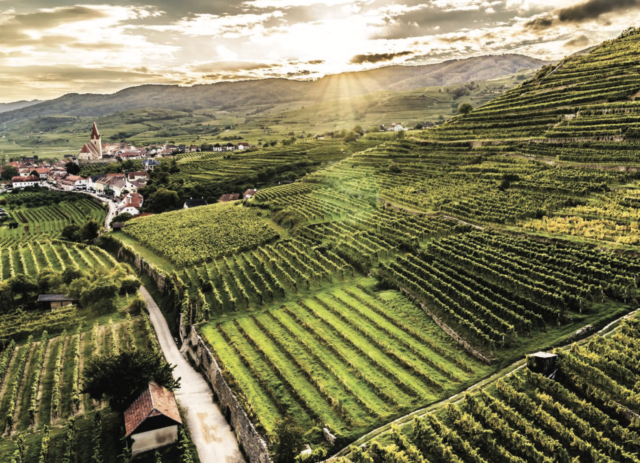
Even with the problems caused by Covid-19, Austria wine has performed strongly worldwide in the first six months of last year. While restaurants were shut down around the globe, consumers of Austrian wine managed to seek out their favourite tipples via other channels, ensuring it retained its position in key markets, even growing in exports by volume in the first six months of the year (see figures, bottom).
This is particularly impressive if one considers how closely connected Austrian wine is with the shuttered fine dining sector. Be it the country’s whites or reds, this nation’s vinous output is adored by sommeliers and other members of the hospitality sector.
But what is it about Austrian wine that has lent it such resilience to the trials created by the pandemic? How has it retained its demand? And why is there such strength to the category?
Towards the end of last year, the drinks business compiled a report to consider in detail what I believe are the key strengths of Austrian wine, and this work can be downloaded by clicking here. But below, by way of introduction to the category, if I were to face the question from any wine lover, be they a trade buyer or consumer, why they should consider Austria, I’d give them the following answer, which I’ve compiled as a seven-part explanation.
1. AUSTRIAN WINES ARE THE PERFECT PARTNERS FOR FOOD, FROM ALL NATIONS

All wine goes with food, right? Yes, but some are much more naturally suited to sipping with your dinner, and if there’s a key, consistent, general hallmark of Austrian wine, it’s an ability to successfully complement food in a broad array of styles. “If I were asked to sum up Austrian wine in one sentence, I would say that the wines are gastronomic; they have the character and texture that makes them fit so brilliantly with food, and I would say the same about the whites and the reds,” says Patricia Stefanowicz MW, a wine judge and consultant with Austrian roots and a passion for the nation since she won a 12-day trip there in 1994, having completed her WSET Diploma (Austria’s Wine Marketing Board has always been a strong supporter of wine education).
Whatever the colour or character of the wine, there’s a lovely refreshing acidity to Austrian whites, reds, stickies or sparklings that ensure they clean the palate as you eat, so, while the styles can vary widely, there’s a common theme of food-friendly brightness to the bottlings from this nation.
For Austrian-born Stefan Neumann MS, director of wine at Dinner by Heston Blumenthal, the wines from this nation can be best summed up in three words: “dry, charming and inviting”. And, Austria’s ability to craft wines that are “balanced” – whether it’s the character of the oak, alcohol or tannins in reds, or texture and acidity in the whites ensure they “complement food” – as well as pairing with a wide variety of dishes.
As Roman Horvath MW points out, speaking about the whites of Domaine Wachau, it’s connected to the range in character. “We do have extremely concentrated full-bodied white wines at the really high end, then we have Federspiel wines that are lighter.”
But the range is also closely linked to region and soil type, he says: “In the Wachau we have rocky soils that give extra energy to the wines; in the Kamptal, where there is a lot of loess, and deeper soils, the wines are more opulent,” he says.
Andreas Wickhoff MW, the general manager at Bründlmayer winery, similarly comments on the food-pairing possibilities of Austrian Wine. “There is balance and elegance in Austrian wine, which makes it a wonderful food partner to Austrian cuisine, but it can match foreign flavours very well, such as Thai or Japanese, and that makes Austrian wines very exciting.”
2. AUSTRIAN WINES ARE RELIABLY EXCELLENT
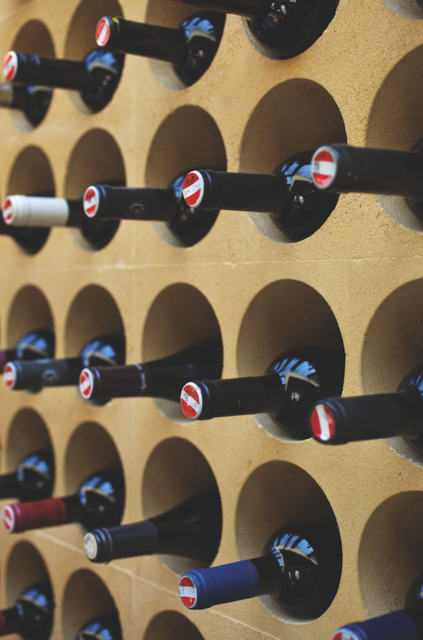
If there’s a further key trait to Austrian wines, it’s their reliable excellence. The combination of strict and strictly enforced wine laws, and a natural, prevalent pride in the hand-crafted high-quality nature of the product, means that there’s no such thing as bad wine from Austria. “There is an unwavering dedication to quality,” says Freddy Bulmer, Wine Society buyer for Austria. “It’s remarkable and admirable. I’ve been struck by Austrian wine producers’ dogged determination to put quality first, because they knew it was the right thing to do.”
Stefanowicz adds: “The quality across the board is so good, whether its Welschriesling to top-class Grüner Veltliner or Riesling from the Wachau. I’ve hardly ever tasted a wine from Austria – starting with 1988 onwards – that I would kick out of my glass. The producers are meticulous from a technical perspective, and the DACs are meticulous about putting the rules in place and enforcing them,” she says, by way of explanation for the consistent excellence of Austrian wines.
Referring to quality and style, Neumann adds: “Despite the diversity of regions and producers, when you pick up a bottle of Austrian wine, you know what you are going to get,” especially because every region “has a clear identity”.
Combine the safety factor of Austrian wine’s reliable quality with its style, and you have a powerful proposition, believes Neumann, who notes that high proportion of relatively low-alcohol wines, along with those made to organic or sustainably principles, or ‘natural’ approaches, means that “Austrian wines are on the pulse”.
Helping the Austrian wine cause further is the open-minded, hard-working nature of the producers, “who are helpful, and understanding of the conditions of the market, and visit their customers”, says Lance Foyster MW, director at Clark Foyster Wines, a specialist in Austrian wines, and the importer who launched labels such as Schloss Gobelsburg and Felsner into Waitrose. But for Foyster, the appeal of Austria extends back to this idea of reliable excellence. “The quality is uniformly high, and the style is delicious. I love the freshness of the wines – which is not to say they are light – they have real weight and texture, sometimes viscosity, but they always have a lovely seam of energy, brightness and acidity – reds, whites and sweet wines.”
It’s also a notable advantage for Austrian wine today. “We find as a market in general today that there is a demand for less extracted and overripe wines, and Austria is really well positioned to provide those,” he says.
3. AUSTRIAN WINES HAVE AN UPMARKET IMAGE
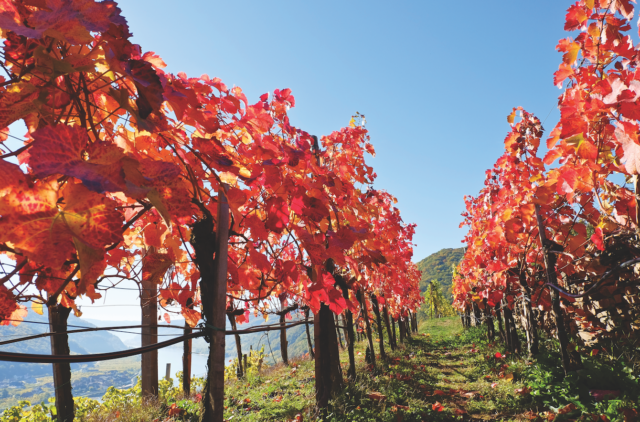
While Austrian wine offers great value for the drinker, it doesn’t serve the bottom end of the market. For example, it’s a struggle to find much on the shelves of UK retailers below £8, although the entry point of the Austrian wine scene is impressive (such as The Society’s Grüner Veltliner at The Wine Society or the Blueprint Grüner Veltliner from Waitrose).
But this failure to supply the world with cheap wine is good for Austria’s positioning, entrenching its reputation for fine wines. After all, this is not a cheap place to make wine, and a network of small, usually family-owned, and quality- oriented producers, with a strong domestic market, has encouraged Austria to develop a premium place in the world market. And, with more embracing organic and biodynamic viticulture, while bearing the lower yields (and quality benefits) of increased vine age, along with isolating specific parcels – Riedenweine – the country is moving further upmarket. Importantly, customers are following such a development.
Neumann says: “The prices are always fair, and you can pick up an Austrian wine for around a tenner and be very happy – but if you spend three or four times that it will be world class, which is impressive compared with other areas, such as Burgundy, Bordeaux or Napa, where at £30-£40 you would be just mid-field.”
Similarly, Bulmer says: “From £8 to £50, if you put an Austrian wine alongside any other at that price then Austria will overdeliver.”
It’s this relative value, even at higher prices, that means Austria is finding a new market among knowledgeable fine wine collectors. Foyster, who supplied top-end, single-vineyard Rieslings and Grüner Veltliners for an offer with The Wine Society and Lay & Wheeler this year, said it would be “something we may offer on a regular basis”.
More generally he says that top-end Austrian wines are “finding a niche with collectors”, noting the demand for Blaufränkisch from Moric at £60-£70 bottle. “Lay & Wheeler, Fine & Rare and The Wine Society have cracked open a seam of private collectors that we can mine,” he says.
Bulmer speaks of his experience of The Wine Society work with Schloss Gobelsburg, which marked the merchant’s first en primeur offer from Austria. “It was a leap of faith that surpassed even our wildest expectations; it was such a success, we will do it every year,” he says.
More recently, Bulmer was thrilled to announce that a release in October sold out in two hours. Using wines from Grabenwerkstatt in the Wachau, he described the biodynamic wines from this producer, which was founded in 2014 by two men in their early 30s, as “stunning”.
Bulmer says: “The wines are seriously classy, fresh and vibrant, age-worthy, and it’s a really interesting story… I had to scramble for more stock.” He lists the wines of Grabenwerkstatt and Kremstal’s Rainer Wess as “ones to watch”.
But there’s a further key aspect to Austrian wines, particularly its fine whites, that make them so suitable for collectors, and that’s their ability to age slowly over time in bottle, and gain complexity. “There are not that many places in the world that produce genuinely age-worthy white wine for under £15, but Austria can do that very well: whether it’s Grüner Veltliner or Riesling, you can find age-worthy wines without breaking the bank,” says Bulmer.
4. AUSTRIA IS HOME TO DISTINCTIVE AND DELICIOUS WHITE WINES
 No mention of Austrian wine is complete without discussing Grüner Veltliner, the country’s most famous single wine offering. It may be a native Central European grape, but it’s almost entirely unique to Austria, with a distinctive and delicious character, and the ability to produce fine dry wines, as well as outstanding sweet ones, along with very good traditional method sparklings too. “It’s Grüner that makes Austria’s wine offering unlike anywhere else in the world,” begins Bulmer.
No mention of Austrian wine is complete without discussing Grüner Veltliner, the country’s most famous single wine offering. It may be a native Central European grape, but it’s almost entirely unique to Austria, with a distinctive and delicious character, and the ability to produce fine dry wines, as well as outstanding sweet ones, along with very good traditional method sparklings too. “It’s Grüner that makes Austria’s wine offering unlike anywhere else in the world,” begins Bulmer.
“It has this ability to be on the one hand complex and interesting, and on the other hand very approachable and drinkable – when often you find only one or the other.
“So it’s a crowd pleaser in best way possible – you can give Grüner to wine nuts or people who know nothing about wine, and both will love it.”
For Chris Yorke, CEO of the Austrian Wine Marketing Board, having a reputation built around something so singular has been good for the nation’s wine industry. “We are definitely known for our Grüner Veltliner, and it’s always better to be known for something than not at all, and once people get their head around Grüner Veltliner, then you can tell the Riesling story, which is different, or introduce the Sauvignon Blancs from Styria, which are a revelation.”
So, while Grüner Veltliner has been Austria’s most powerful unique selling point, there are other varieties to consider that augment the distinctive nature of the nation’s white-wine offering.
Among these is Austrian Welschriesling, which is undergoing a revival, according to Josef (Pepi) Schuller MW, who is director of the Austrian Wine Academy, based in Rust. He also mentions the blends of the Thermenregion, based on Zierfandler and Rotgipfler, and the rising profile of Wiener Gemischter Satz DAC, a field blend of grapes from Vienna. Neuburger is another grape to look out for, says Schuller, describing it as “a brilliant variety but a bastard in the vineyard”, noting that “there are 20 to 30 producers who really believe in it”.
Another grape is Furmint, which “used to be a Rust phenomenon”, says Schuller, but now you see it planted in all parts of Austria, especially Styria.”
Partner Content
In short, exciting Schuller, and enticing for any wine lover, is the fact that Austria is rich in “rediscoveries”.
5. AUSTRIA IS A GLOBAL LEADER IN GREEN-MINDED WINE PRODUCTION
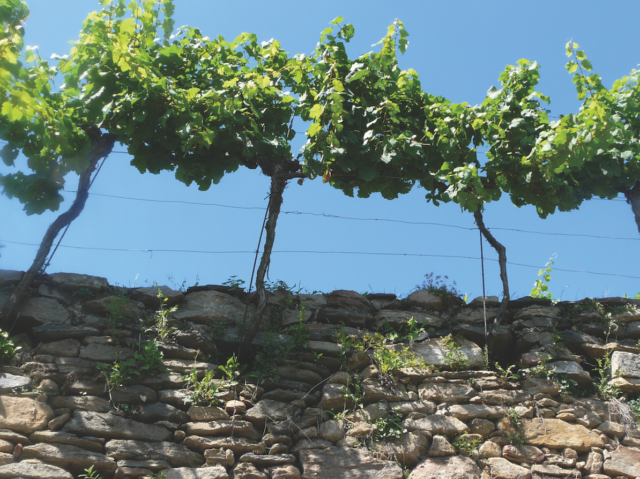 Did you know that Austria has the highest proportion of certified organic vineyards of any country in the world? With more than 15% of its plantings farmed in this manner, it is a global leader, according to Yorke. And when it comes to organic grape production, although it appears Italy has a higher total, Yorke adds that a significant part of that is for table grapes, leading him to believe that Austria is also “number one in organic wine grapes”. Its Sustainable Austria programme is strict, with more than 12% of productive vineyards certified.
Did you know that Austria has the highest proportion of certified organic vineyards of any country in the world? With more than 15% of its plantings farmed in this manner, it is a global leader, according to Yorke. And when it comes to organic grape production, although it appears Italy has a higher total, Yorke adds that a significant part of that is for table grapes, leading him to believe that Austria is also “number one in organic wine grapes”. Its Sustainable Austria programme is strict, with more than 12% of productive vineyards certified.
Yorke notes: “The Scandinavian monopolies are tough on greenwashing, and last year they did a detailed review of 300 sustainable certifications, and Sustainable Austria was one of just 14 to meet their criteria.” More generally, he says: “If you go to a winery, you won’t see brown strips, there is biodiversity – if you want to grow grapes in Austria then you have to meet minimum standards, and those are quite high.” So Austria is a leader in organics, among the leaders for sustainable management, and has a high base line for viticulture.
For Wickhoff at Bründlmayer, which became 100% certified in 2018, managing a vineyard organically is just another part of a “hands-on” philosophy, that extends to riddling its sparkling wines by hand. “We want to maintain a more artisanal approach,” he says, although he adds that being certified does increase one’s chance of getting a tender with a Scandinavian monopoly.
Meanwhile, Domäne Wachau is “100% sustainable”, according to Horvath, with 80ha of its 400ha now certified organic. “We are convinced that being organic is the right way in the long term, and that it brings that extra little dimension on quality and style.” He sums up: “We can pick earlier with lower alcohol but still with good complexity and ripeness.”
6. AUSTRIA IS A GLOBAL LEADER IN WINE TOURISM
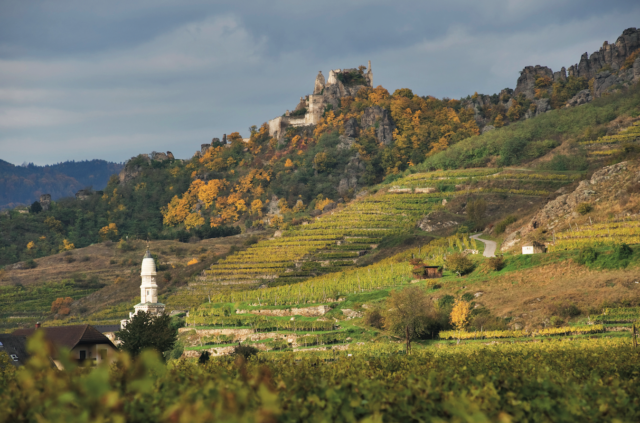
Developing facilities at wineries or creating attractions to entice wine lovers is fashionable today, but wine tourism has a long history in Austria, ensuring the country is a leader in this field. Key to the nation’s attraction is Vienna, a magical city that offers so much for those who appreciate architecture, museums, art galleries, churches and restaurants, but also, with 600ha of vines, and almost 200 wine-focused taverns – called heurigen – it is truly a city for wine drinkers.
“They say that Vienna, with less than two million people, is the most liveable city in the world, and when I lived in New Zealand, you had to fly one or two hours to see the wine regions, but here the distance is so much less,” says Yorke, comparing his roles at the Austrian Wine Marketing Board with his previous appointment at New Zealand Winegrowers, which has its headquarters in Auckland.
“I think Austria is the number-one wine tourism destination in the world – you can stay in Vienna and in one hour’s drive you can be in 13 different regions,
and in two hours drive you have all the wine regions covered,” says Yorke.
Not that the wine regions have to be visited by car. There’s the Vienna Heurigen Express, that will take you on a tour of the vineyards and estates of the city and its suburbs by train. Or, there are routes for cyclists, with Yorke recommending exploring the Wachau in this way, travelling along the banks of the Danube.
Horvath says: “Tourism is so important for us, especially from Germany, and they say that wine exports to Germany are almost as high in trunk of cars as it is via the official channels.”
Saying that all of Austria is now “very well set up for wine tourism”, he adds: “We have the heurigen, which is an ancient form of wine tourism, and we’ve seen a renaissance in guesthouses at wineries, which has encouraged even more people to visit the wine lands. Crucially, during the pandemic, he highlights the vital role of wine tourism in connecting producers with their consumers. “In the summer, tourists and Austrians fled to the wine lands, and so many wineries were selling to them direct, proving how important it is to have a facility for your loyal, private customers,” he says.
7. AUSTRIA IS HOME TO DISTINCTIVE AND DELICIOUS RED WINES

As any Austrian wine enthusiast is quick to point out, don’t forget the country’s reds. “Austria produces fantastic red wines,” says Bulmer, mentioning the “very good” Birgit Braunstein from Leithaberg, which The Wine Society uses to source its Blaufränkisch – a grape that, like Grüner Veltliner in whites, is native to Central Europe, and has become a flagship variety for Austria.
Stefanowicz says: “Zweigelt, Sankt Laurent and Pinot Noir can all be excellent but if I had to pick one Austrian red grape then it would be Blaufränkisch. It can be Beaujolais in style or something serious with tannin and oak.”
Looking back to his first buying trip to Austria in 1998, Foyster says: “The only red I bought was a Sankt Laurent from Pittnauer, because it was in a lighter style, and that was closer to my taste.” Nowadays, however, Foyster handles a host of reds made with Blaufränkisch, as the approach to winemaking has become gentler, leading to less heavy, tannic styles. In Foyster’s view, a leader in this progression was Roland Velich at Mittelburgenland producer Moric, who is “a very sensitive winemaker” and presented the idea that Blaufränkisch is a cool-climate grape variety, comparing his wine style to Northern Rhône Syrah, red Burgundy, or Nebbiolo from Piedmont.
Velich doesn’t use any new oak, and handles the wine gently, so there is an energy about it, and he’s influenced other growers. As a result, Blaufränkisch is a fabulous grape: it reflects terroir, different philosophies of winemaking, and it ages well; it can be taken seriously, and I love it now; it’s been a great success.”
Celebrated producer Dorli Muhr, in Carnuntum, similarly notes an appealing delicacy in the production of Blaufränkisch, giving greater recognition for the variety among critics and wine collectors. “If you look for heavy, bold red wines, with a lot of oak, then maybe Austria is not your best choice, but if you like Nebbiolo and Pinot Noir, then Blaufrankisch will offer the right experience for you,” she says. Like Velich, she prefers a gentler approach, and the combination of Carnuntum’s warm, dry conditions, rocky soils and 60-year-old vines has just secured her the highest rating for any Austrian red from the Wine Spectator, achieving 94 points for her Ried Spitzerberg Erste Lage from 2017.
Such a success has come about, believes Muhr, thanks to a warming climate in Austria, which has resulted in riper tannins, as well as her having taken a gentler approach to the grape that has yielded lighter styles.
Such changes have meant something important for Austria, as they are boosting the country’s recognition for producing fine reds as well as whites. Not only that, but in both cases the stylistic hallmark is the same: there’s a freshness to the wines.
And finally… an update on the market for Austrian wine in 2020
 Despite the challenges of early 2020, exports of Austrian wine remained strong in the first half of the year, with only a small drop in value and actually good growth in volume.
Despite the challenges of early 2020, exports of Austrian wine remained strong in the first half of the year, with only a small drop in value and actually good growth in volume.
In the six months from January to June 2020, Austria’s wine exports by value fell 1% (much less than feared) and even rose 7.4% by volume.
Austria’s leading export markets, Germany and Switzerland, proved highly dependable, recording volume increases of 14.3% and 31.3% respectively and value increases of 0.4% and 3.5%.
In Germany, Austrian wine is strongly out-performing Italy, Spain and France which have all seen sales declines over this period.
Exports to the US have been less good, down by 9.4% in volume and 11% in value, although, again, this is less drastic than the declines seen by other major European wine producers. The value declines for French and Spanish wines in the US from January to June has been reported at over 50% each.
Three other markets that have performed well so far this year are the ‘monopoly’ markets of Sweden, Norway and Canada, which have all see big jumps in volume and value sales. In Canada in particular the results have been striking, volume up by 58.9% and value up by 47.7%.
Despite these largely encouraging results, the Austrian Wine Marketing Board did note that some 23 million litres of wine has remained unsold due to the widespread closure of the on- trade, and the impact on the tourism industry has also been pronounced.
CEO Chris Yorke said: “So far, our wines have performed well in export, which of course makes us very happy. Unfortunately, we are not yet able to make a forecast for the next year because the global situation remains too uncertain.
“As always, it is intriguing to take a closer look at individual export countries; so far, Germany and Switzerland have demonstrated positive growth. In the US we have indeed suffered downturns, but far less severely than the wine exporters France or Germany.
“The situation of Austria’s winegrowers currently depends heavily on which and how many channels they use to market their wines. This demonstrates how effectively a diversified distribution structure – utilising multiple channels – minimises risks. This will become ever more important in the future.”
This article first appeared in The Austria Report 2020 by the drinks business, which was compiled with the support of the Austrian Wine Marketing Board (AWMB)

